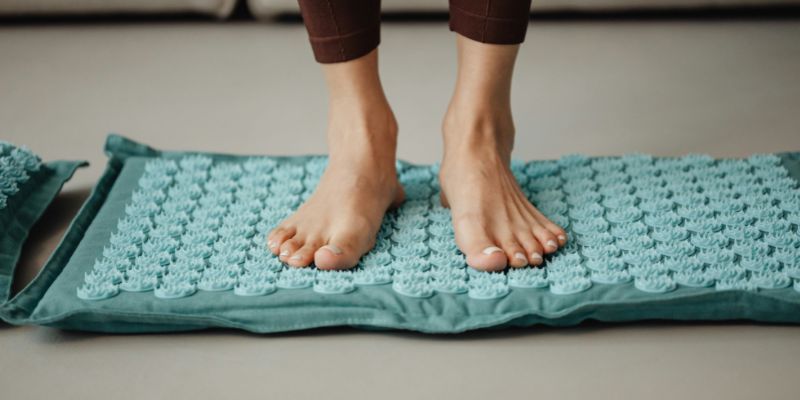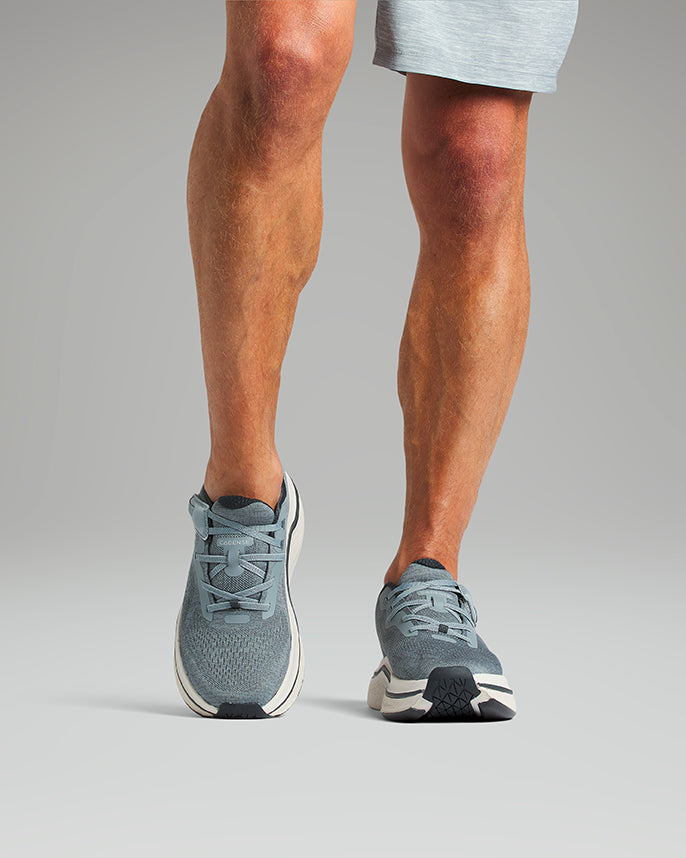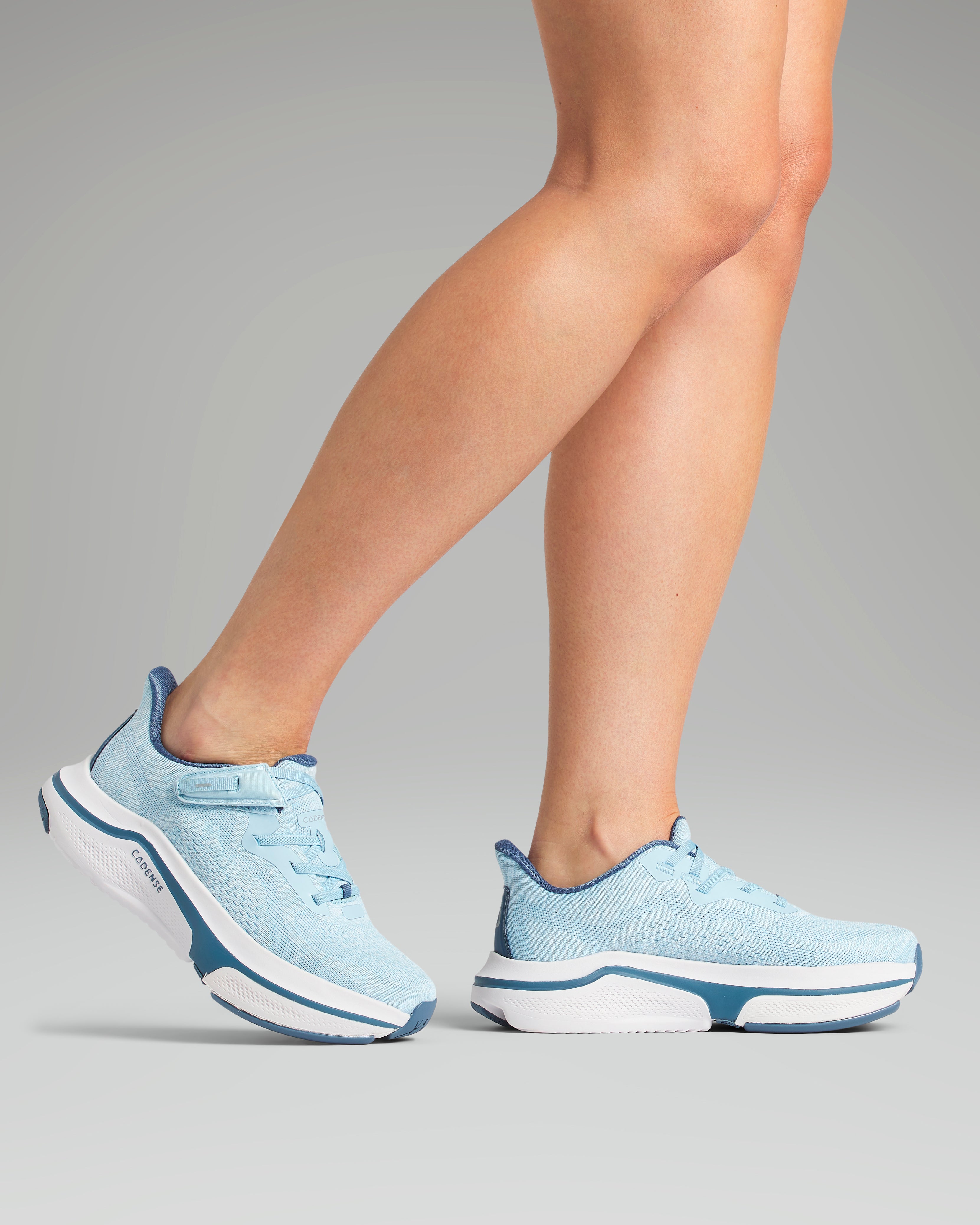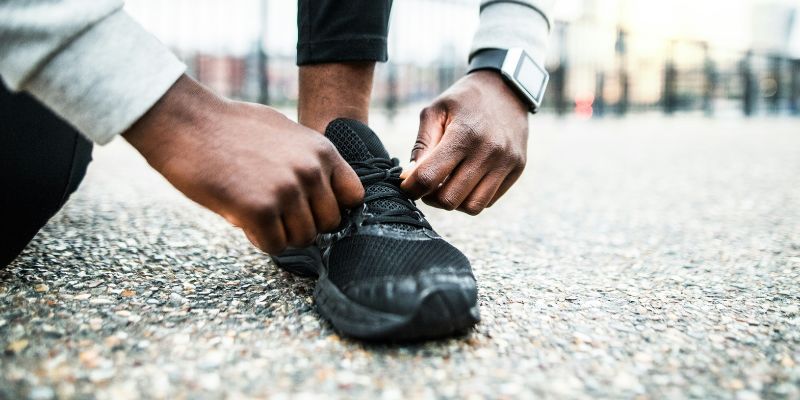
Signs of Healing Foot Drop

Some cases of foot drop are long-term, but many improve over time with the right treatment and care. If you're wondering whether your foot drop is getting better, there are encouraging signs to look out for.
In this guide, we’ll explore how to recognise recovery signs, understand what they mean, and discover how the right footwear — such as adaptive trainers — can support your progress.
Primary Causes of Foot Drop
So, what exactly is foot drop?
According to the Mayo Clinic, it’s a condition that makes it difficult to lift the front part of your foot, often resulting in a dragging gait.
There are several underlying causes, including:
-
Stroke or Multiple Sclerosis (MS)
-
Traumatic brain injury (TBI)
-
Peroneal nerve damage (the most common cause)
-
Amyotrophic lateral sclerosis (ALS) or muscular dystrophy
-
Prolonged kneeling, squatting or leg-crossing
-
Wearing casts or tight boots that compress the nerve
Injury to the peroneal nerve, which runs from the knee to the foot, is often the main culprit. It can be damaged through trauma, long periods of immobility, or external pressure.
Certain neuropathic conditions, such as Charcot-Marie-Tooth disease (CMT), can also lead to foot drop. If your foot drop is linked to peripheral neuropathy, managing nerve health and using supportive footwear can make a real difference.
Foot Drop Symptoms
Foot drop can affect one or both feet. Common signs include:
-
Difficulty raising your toes while walking or climbing stairs
-
A tendency to lift your knees higher than normal to prevent tripping
-
A slapping sound when your foot hits the ground
-
Numbness, tingling or reduced muscle tone in the lower leg
-
Difficulty maintaining balance or stability
You may also notice muscle weakness or gradual loss of muscle mass in the affected leg. These symptoms can be frustrating, but many people experience significant improvement with the right treatment plan.
Signs of Recovery After Foot Drop
Although recovery times vary, studies show that up to 88% of foot drop cases improve with proper care. Here are some encouraging signs your condition may be healing.
Improved Balance
Foot drop often disrupts the natural walking pattern, causing the toes to hit the ground before the heel. This imbalance increases the risk of tripping.
If you find your balance improving and your steps becoming smoother, it's a positive indicator that your muscles and nerves are beginning to recover.
Better Coordination in the Feet and Ankles
Regaining coordination means your muscles and nerves are starting to work together again. If you can lift and place your feet more naturally, or find walking obstacles easier to navigate, it’s another strong sign of healing.
More Daily Independence
Sometimes the best indicator of progress isn’t physical — it’s how your confidence returns.
If activities that once felt daunting, such as walking to the shops or climbing stairs, now feel easier, it shows your mobility and endurance are improving. Even small milestones — like needing less rest between tasks — can signal meaningful recovery.

How Long Does It Take to Heal from Foot Drop?
Recovery time depends on the underlying cause, treatment, and individual health factors.
For example:
-
People recovering from surgery for degenerative lumbar conditions often notice improvement within six weeks.
-
Those with compressive neuropathy may see results within three months.
Ask your GP or specialist for personalised guidance on your expected recovery timeline. In some cases, foot drop may remain a chronic condition, but even then, rehabilitation and supportive footwear can greatly improve day-to-day function.
How Your Choice of Footwear Can Support Recovery
It might surprise you to learn that the right trainers can make a measurable difference to recovery from foot drop.
Most standard trainers assume a natural gait — with the toes lifting freely — which isn’t possible for everyone with foot drop. That's where Cadense Adaptive Trainers come in.
Adaptive Support for Healing
Cadense's Original Adaptive Trainers are designed to help you move naturally and comfortable, even when you can't lift your toes as usual. Their patented Variable Friction Technology allows your feet to glide smoothly over uneven surfaces, helping to reduce trips and strain while improving balance.
Other benefits include:
-
A secure, comfortable fit that supports stability
-
Soft, cushioned soles that absorb shock and ease joint pressure
-
Lightweight materials for effortless wear
-
Easy on/off design — ideal for those with limited mobility
With a variety of colours and styles available, they combine function, safety, and modern design — perfect for daily wear.
Encouraging Movement
Wearing adaptive trainers that support your movement can encourage gentle exercise — an essential part of healing. Regular, safe activity improves circulation, strengthens the muscles that stabilise your ankles, and enhances coordination — all of which can help speed up recovery.

Healing With Cadense Adaptive Trainers
Healing from foot drop takes time and patience, but improvement is absolutely possible. By combining medical care, regular exercise, and adaptive footwear engineered for mobility, you can regain balance, confidence, and independence — one step at a time.




